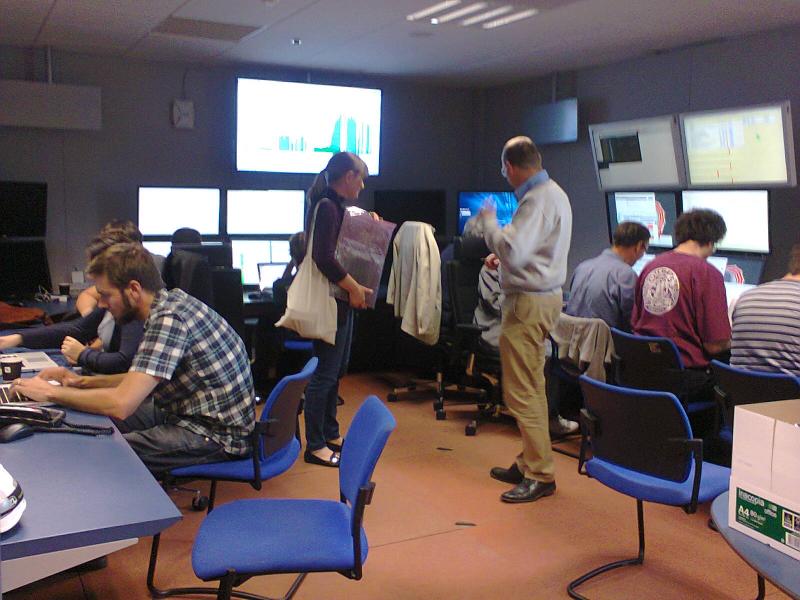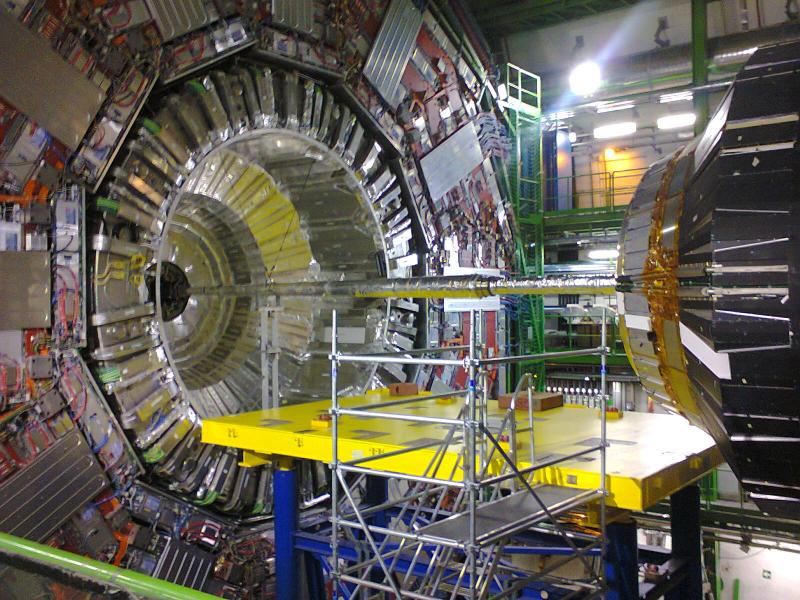The global runs are always occasions of hard work and great fun at Point 5, the CERN site where the CMS detector is located. If you come to visit the Control Room and the surface area during these periods you will certainly be struck by the number of people and cars on site. We are almost at the end of the LHC's first long shutdown and, since April, the LHC and all its facilities including the CMS detector are gradually switching on and resuming operations (read about the CMS April Global Run).
The first week of July marks the beginning of a long series of Mid-Week Global Runs (MWGR) for the CMS Experiment, which will have place every two weeks until the end of October 2014. It provides valuable training before an important upcoming appointment: proton collisions at a new world-record energy of 13 TeV expected in the first months of the 2015. No proton collisions will take place in the MWGRs and data will be collected from cosmic rays. The emphasis of this first MWGR was on testing the new release of the Data Acquisition system (DAQ), which will offer a more powerful and efficient tool for data processing in CMS.
The goal of the online Data Quality Monitoring (DQM) is to test and validate the basic features of the new framework. For these tests all CMS subdetectors, if ready, will be incorporated with an active role in the data taking. The offline work will be mainly dedicated to exercising the offline certification tools such as the Run Registry and the database. Lots of students and young researchers are joining the CMS team in these efforts, gaining insight into the online and offline framework.

For the three days of the first MWGR, all the subdetectors operated safely including all the subdetector components available for the global run. Even though at the beginning of the run only one half of CMS (on the so-called "+ve" side) was able to take data due to operations on a platform located on the other half (the "–ve" side) of the detector, starting from the evening of the 3 July, the full detector participated in the data taking.

The CMS detector needs to be ready, with all the subdetectors tested and all the online and offline features verified, by the end of this year. The Proton Synchrotron has had beam since June and the cooling procedure of some dipoles of the LHC has started. The CMS team is working very hard to prepare for the exciting new phase of data taking beginning with the collisions of 2015.
The views expressed in CMS blogs are personal views of the author and do not necessarily represent official views of the CMS collaboration.
